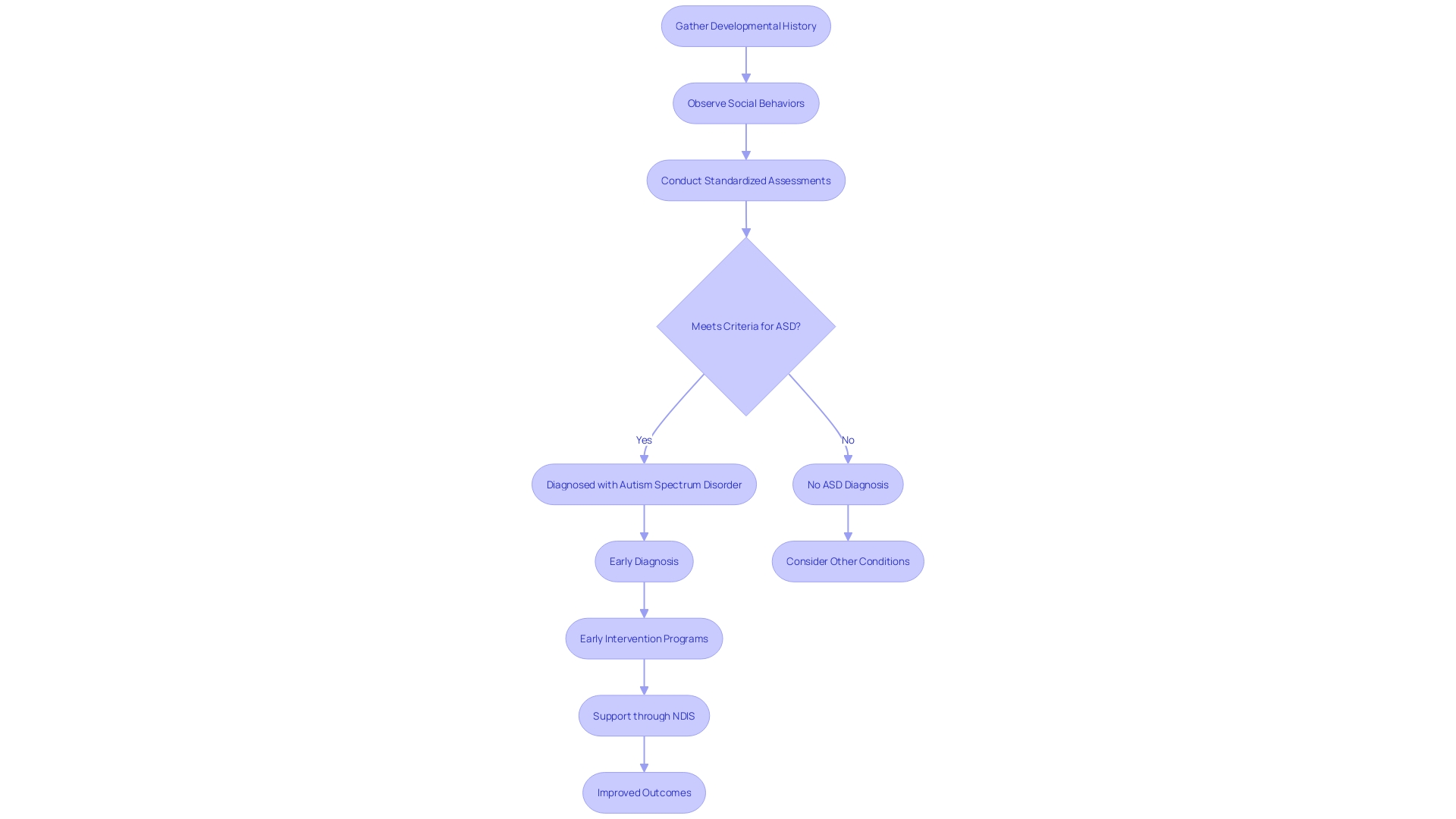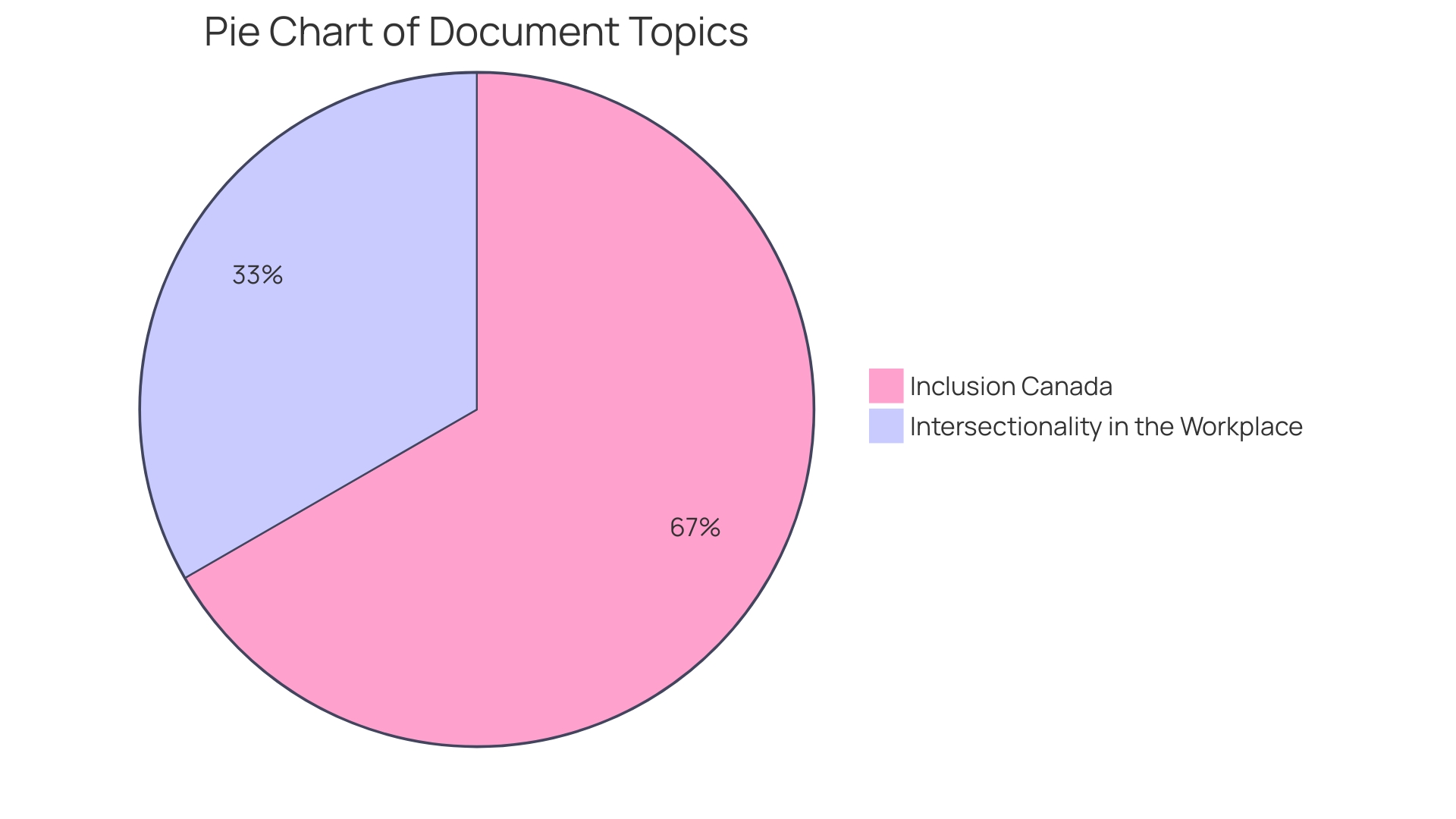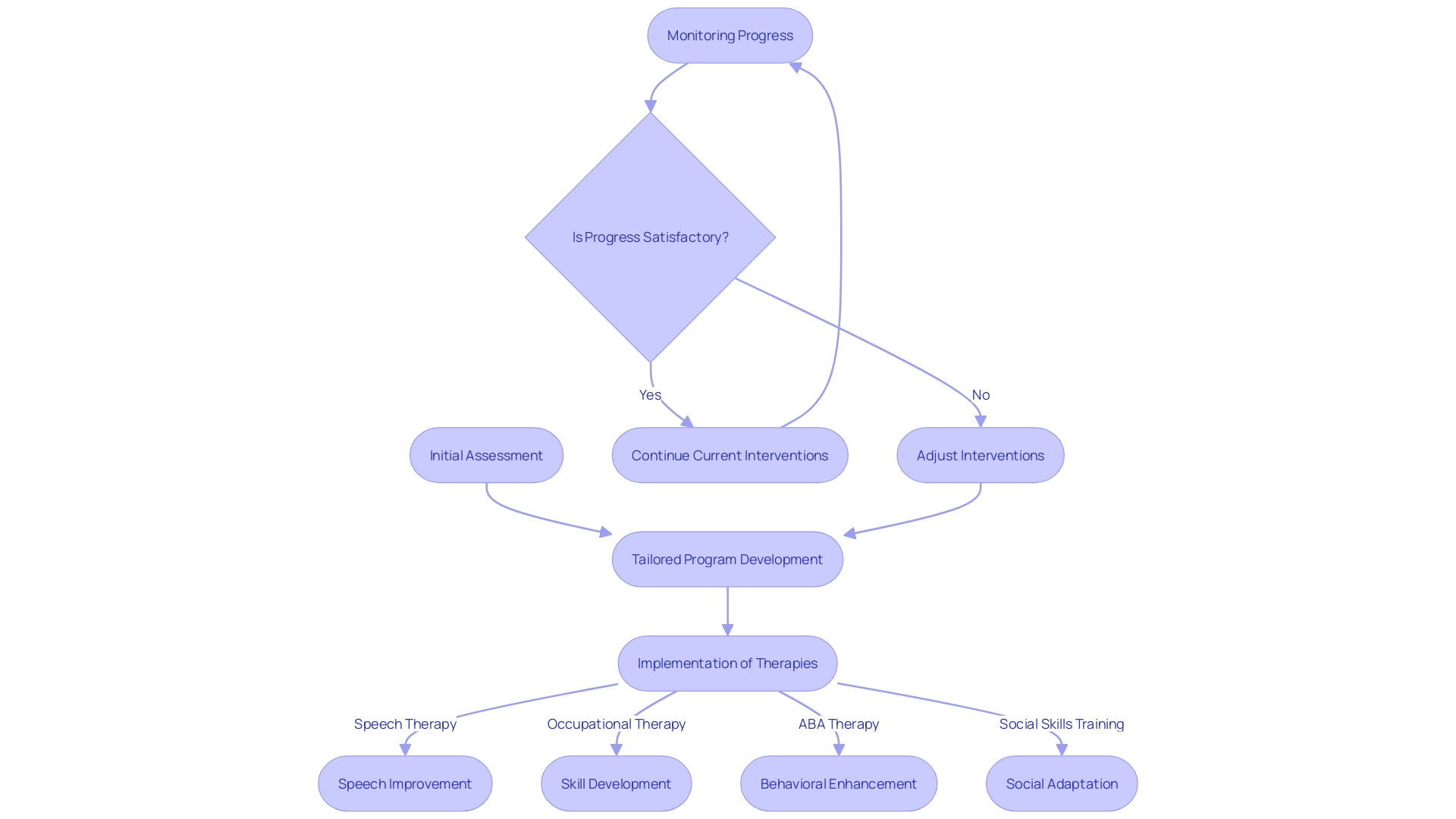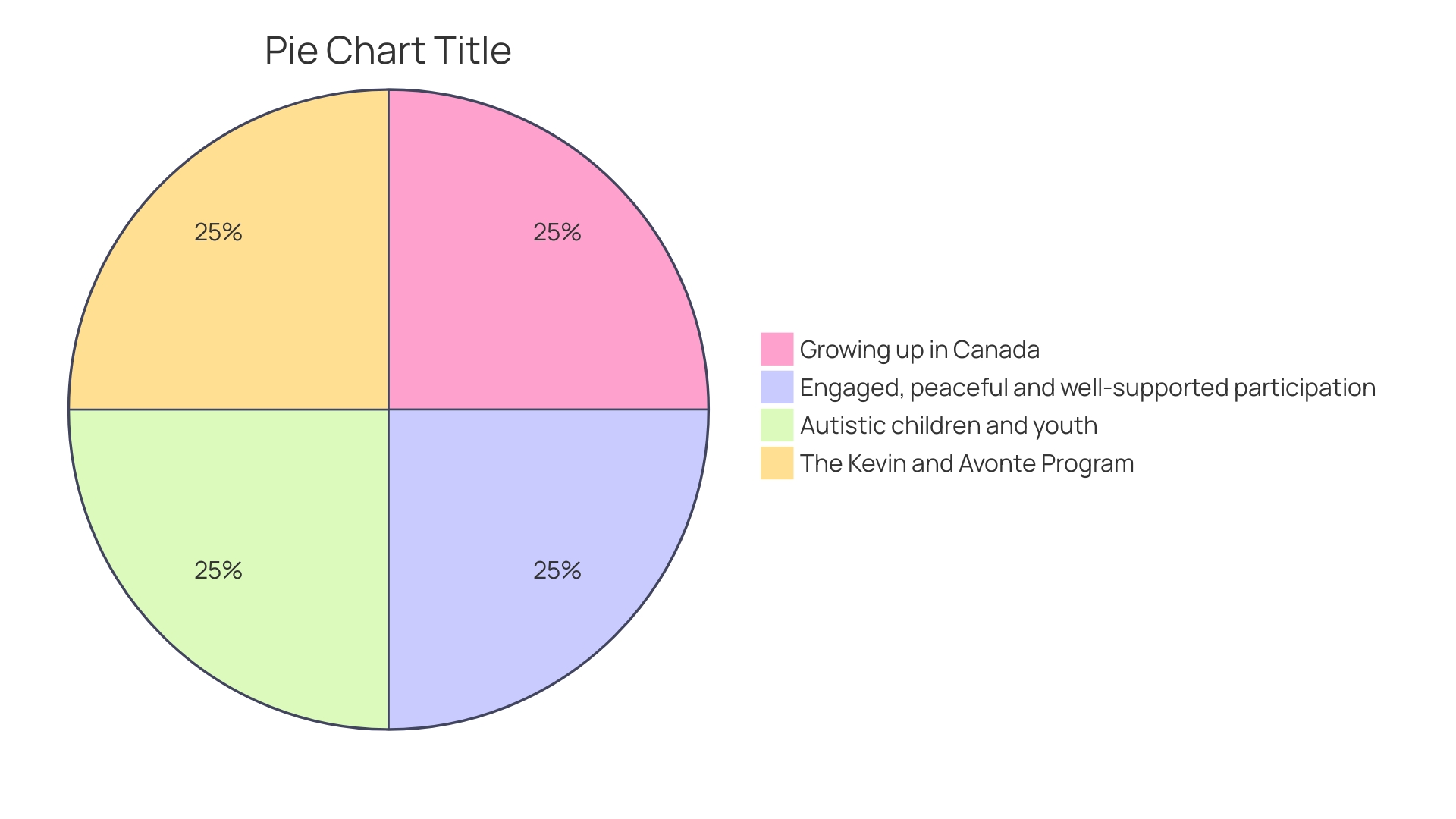Introduction
The historical classification of autism dates back to the early 20th century when it was often misunderstood and misdiagnosed. Initially viewed as a symptom of other psychological disorders, it wasn't until the 1940s that autism began to be recognized as its own syndrome. Today, Autism Spectrum Disorder (ASD) is understood as a complex range of neurodevelopmental disorders influenced by genetic and environmental factors.
The approach to understanding and diagnosing autism has evolved over the years, with the International Statistical Classification of Diseases (ICD) providing a global standard for recording and categorizing health conditions. Recent advancements in technology have also allowed for early identification of autism. As our understanding of autism grows, so does our ability to support individuals with ASD and their families.
In this article, we will explore the current classification system for ASD, the characteristics and symptoms of the disorder, the diagnosis and assessment process, as well as the importance of early intervention and tailored therapies. We will also discuss the educational and life-span support available for individuals with autism and the resources and advocacy efforts that provide guidance and empower families. By delving into these topics, we aim to provide valuable information to Parent Advocates, helping them navigate the challenges of raising a child with autism and ensuring their well-being.
Historical Classification of Autism
The term 'autism' traces its origins to the Greek word 'autos,' meaning 'self.' This term was introduced into medical terminology by Swiss psychiatrist Eugen Bleuler in 1911 to describe a self-absorbed thinking pattern seen in schizophrenia patients. For years, autism was not distinguished as a separate condition but was considered a form of childhood schizophrenia or a symptom of other psychological disorders. It wasn't until the 1940s that autism began to be recognized as its own syndrome, thanks to the work of psychiatrists Leo Kanner and Hans Asperger, who identified it independently.
Autism Spectrum Disorder (ASD) today is known as a complex range of neurodevelopmental disorders, influenced by genetic and environmental factors, which affects individuals across all ethnic, racial, and socioeconomic groups. According to the National Institute of Health, ASD is marked by challenges in communication and behavior, which can impact a person's functioning in everyday life. The diversity in symptoms and abilities among those on the spectrum led to the understanding of autism as a 'spectrum disorder.'
In modern times, the approach to understanding and diagnosing autism continues to evolve. The International Statistical Classification of Diseases and Related Health Problems (ICD) is a global standard for recording and categorizing health conditions, which includes ASD. This standardization allows for the consistent collection of data, facilitating large-scale research and providing insights into the prevalence and patterns of autism.
Recent advancements in technology have also provided new tools for early identification of autism. For example, a study led by Kristiina Tammimies at the Karolinska Institutet developed a machine-learning model called 'AutMedAI,' which can identify about 80% of children with autism under two years of age by analyzing a set of 28 parameters.
With each passing year, our understanding of autism grows, and with it, our ability to support individuals with ASD and their families. It's a testament to the progress we've made from the early 20th century, where autism was barely understood, to now, where it is recognized as a distinct and diverse condition.

Current Classification System: Levels of Autism Spectrum Disorder
Autism Spectrum Disorder (ASD) represents a broad category of neurodevelopmental conditions that manifest in diverse ways. The most recent classification system for ASD reflects this variety, differentiating levels of needed support into three categories: Level 1 for those requiring support, Level 2 for substantial support, and Level 3 for very substantial support. This nuanced approach aligns with the understanding that each individual with autism has unique strengths and challenges.
The International Statistical Classification of Diseases and Related Health Problems (ICD) has been instrumental in providing a standardized framework for such diagnoses. Adopted by the World Health Assembly, the ICD-11, effective from January 2022, allows for systematic recording and comparison of health data, crucial for research and healthcare services.
Incorporating ASD into a person's identity, especially during adolescence, can be crucial for self-continuity and differentiation. It influences life choices, including career paths that may align with Autistic strengths, and fosters a sense of community. In Australia, comprehensive assessments by a team of professionals support this individualized understanding of autism, leading to personalized interventions through the National Disability Insurance Scheme (NDIS).
Early intervention is key, focusing on communication, social skills, and other developmental areas, ensuring every child's potential is nurtured. The commitment to open science methodologies, as seen in the rapid advancement of research during the pandemic, emphasizes the importance of sharing knowledge and collaborative efforts in understanding and supporting autism.
Characteristics and Symptoms of ASD
Autism Spectrum Disorder (ASD) encompasses a wide range of conditions that can significantly impact a person's social skills, communication abilities, and behavior. Each individual with ASD may experience a unique set of challenges and strengths. Some common social communication difficulties include trouble with the nuances of conversation, such as understanding nonverbal cues like facial expressions and body language, or initiating and sustaining dialogue. These challenges can make social interactions more complex for those with ASD. Additionally, individuals may engage in repetitive behaviors, have intense interests in specific topics, follow strict routines, and show various sensory sensitivities. These characteristics are not only identifiers of ASD but also areas where support can be tailored to meet individual needs. By acknowledging these traits, we can better assist individuals with ASD in overcoming obstacles and leading fulfilling lives.
Diagnosis and Assessment
Diagnosing autism is a meticulous process that involves a team of specialized professionals working together to understand the unique experiences of each individual. This team often includes psychologists, pediatricians, speech therapists, and occupational therapists. Their approach is comprehensive, looking into the person's developmental history, carefully observing their social behaviors and interactions, and employing standardized assessment tools. The collective aim is to gather enough evidence to see whether an individual aligns with the diagnostic criteria for autism spectrum disorder (ASD).
A timely diagnosis is crucial. It unlocks the door to early intervention, which is pivotal for enhancing the life quality of individuals with ASD and their families. Early intervention strategies are tailored to improve communication, social skills, and behavior management, thereby fostering better integration into school and community life. Research underscores the importance of recognizing the signs of autism early on, such as challenges in making eye contact or responding to one's name by 9 months, as these indicators can lead to earlier support and improved outcomes.
The road to diagnosis, however, can be lengthy, with families often waiting years for clarity. This lag in diagnosis is even more pronounced for females, particularly those with co-occurring conditions like ADHD. Yet, the developmental trajectory of autism, influenced by both genetic and environmental factors, suggests that the earlier we identify and address these challenges, the better we can support those affected to lead more independent and fulfilling lives.
In Australia, the commitment to supporting individuals with autism is reflected in the National Disability Insurance Scheme (NDIS) and various early intervention programs. These initiatives are designed to empower children with autism and their families with personalized plans and community-based services. The push for inclusive education further emphasizes the country's dedication to nurturing each child's potential, recognizing that every individual, including those with autism, has the right to education and an equitable chance in life, echoing the sentiment of Dr. David (Dan) R. Offord that every child should have a fair chance in the race of life.

Supporting Individuals with ASD
Fostering an inclusive environment that nurtures the social, emotional, and cognitive development of individuals with Autism Spectrum Disorder (ASD) is essential. Customized educational strategies, such as the Treatment and Education of Autistic and Related Communication-Handicapped Children (TEACCH) approach, leverage the strengths of those with ASD by utilizing visual learning and consistent routines. Visual schedules and structured workstations, for instance, can significantly enhance their educational experience. Additionally, therapies and interventions are tailored to the individual's particular talents and challenges, supporting not just academic achievements but also vital communication and social skills.
Collaboration with an interdisciplinary team, including speech therapists, occupational therapists, and behavior analysts, is key to crafting strategies that address communication, social integration, and behavior management. This cooperation is often the bedrock for creating an equitable environment where children with ASD can thrive—a 'fair race,' in the words of child psychiatrist Dr. David (Dan) R. Offord. Innovative solutions like augmented reality (AR) applications, which transform tactile sensations into visual and auditory stimuli, are proof of the progress being made in adapting the environment to meet the sensory needs of those with ASD.
Moreover, early and accurate diagnosis plays a pivotal role in improving outcomes. Organizations like The Autism Community in Action (TACA) and advancements by companies such as NeuroQure underscore the importance of early intervention. With the help of community support and resources, families are empowered to facilitate their children's development and overall well-being, ensuring that all children, including those with disabilities, have the opportunity to participate meaningfully in school and community life.

Early Intervention and Therapies
Maximizing the potential of those with autism is deeply rooted in the effectiveness of early intervention. Studies have continuously supported the idea that beginning treatment in the early stages of childhood can significantly benefit communication, social abilities, and behavior. Tailored programs often include speech and occupational therapy, applied behavior analysis (ABA), and training for improved social skills, all within a structured setting. This personalized approach is pivotal, especially when considering the words of Dr. David (Dan) R. Offord, who emphasized equitable participation in society for children with disabilities as a key aspect of mental health and well-being.
The importance of early intervention is underscored by recent shifts in autism research methodologies. Randomized controlled trials are now the gold standard, replacing quasi-experimental studies to provide more definitive evidence for the efficacy of these interventions. This change is part of a broader effort to refine and improve treatment strategies, as recommended by the Interagency Autism Coordinating Committee (IACC), a federal body working to accelerate progress in research and services for autism.
The urgency for early intervention is further highlighted by the fact that autistic individuals often face additional emotional and behavioral challenges, which can increase the risk of exclusion from social participation in schools and communities. Supporting these individuals not only involves addressing their needs but also capitalizing on their unique contributions to society. It's about making the metaphorical race fair, as Dr. Offord articulated, and ensuring that every child has the opportunity to thrive in their environment, free from undue stress and with the full support of their caregivers.
Research synthesis has revealed that many intervention studies suffer from design flaws, which complicates the assessment of their impact. Nevertheless, the autism community, including researchers and advocates, has played a crucial role in highlighting these issues and advocating for the respect and consideration of people with autism in research practices. Such involvement is crucial for maintaining the integrity and utility of research in creating meaningful change in the lives of those with autism.

Educational and Life-Span Support
Tailoring education to fit the individual needs of those with Autism Spectrum Disorder (ASD) is not just beneficial; it's imperative. Each person with autism brings unique strengths and faces distinct challenges, particularly in learning environments. A customized, evidence-backed educational approach can significantly enhance both academic and social skills. Such strategies include the thoughtful integration of special education services, the creation of inclusive classrooms, and the provision of specific accommodations to support students with ASD.
For example, consider the innovative application of augmented reality (AR) technology in making dental visits less stressful for individuals with autism. This technology translates uncomfortable tactile sensations into visual and auditory stimuli, which are often better tolerated. This same principle of tailored sensory experiences can be applied to educational settings, improving engagement and comfort for learners with autism.
Furthermore, it's crucial to look beyond the classroom and prepare these individuals for life as adults. Transition planning is an essential component of this process, encompassing employment preparation, development of independent living skills, and fostering social integration. Such comprehensive support not only contributes to the immediate well-being of individuals with autism but also paves the way for their long-term success and fulfillment.
As highlighted by the University of Adelaide's commitment to specialized training, and the work of the Interagency Autism Coordinating Committee (IACC) in aligning federal efforts and community needs, it's clear that when educational approaches are well-informed and carefully implemented, they can transform the learning experience for students with ASD. This aligns with the vision of ensuring equitable opportunities for all children, as advocated by Dr. David (Dan) R. Offord, who believed in a 'fair race' for every child.
By recognizing the diverse needs and inherent capabilities of children with autism, and by equipping their caregivers with the necessary resources, we can mitigate stressors and unlock each child's potential. This is not only a matter of academic achievement but also a testament to our society's commitment to mental health, equity, and the holistic development of every individual.
Advocacy and Resources for Families
Autism, a neurodevelopmental condition, presents families with distinct challenges that require continuous learning and adaptation. As advocates and primary support for their loved ones, families benefit greatly from resources that empower them to effectively nurture their child's development. Accessing the latest information on treatments, medications, and therapeutic approaches is critical, as noted by advocates who emphasize the importance of staying informed to make educated decisions regarding a child's care.
Support networks play a pivotal role by connecting families with similar experiences, fostering a sense of community, and offering guidance on navigating services and entitlements. Organizations like The Arc of the United States collaborate with health foundations to address mental health needs, while advocacy groups such as ASAN make policy advocacy accessible to self-advocates through Easy Read resources. These initiatives contribute to a fair 'race' for autistic individuals, as envisioned by Dr. David (Dan) R. Offord, promoting equity and inclusive participation in society.
Furthermore, access to accurate and trustworthy information mitigates the risks associated with misleading treatment claims found online. Caregivers must critically evaluate the benefits and risks of medications and therapies, a responsibility underscored by the experiences of those within the autism community. Statistics reveal the significant impact of state Medicaid programs on the care and services available to the autism community, highlighting the importance of tailored approaches to support individuals with autism.
In the spirit of making the race fair for every child, it is essential to recognize the unique contributions autistic individuals bring to their communities, reduce stressors, and support caregivers in their role. This comprehensive approach to support not only aids in the healthy development of autistic children but also strengthens family well-being, echoing the sentiments of Disability activist Nicoletta LaMarca Sacco and other leaders who advocate for social justice and mental health equity.

Conclusion
In conclusion, the historical classification of autism has evolved, and Autism Spectrum Disorder (ASD) is now recognized as a complex range of neurodevelopmental disorders influenced by genetic and environmental factors. The International Statistical Classification of Diseases (ICD) provides a global standard for recording and categorizing ASD, facilitating research and healthcare services.
Timely diagnosis is crucial for early intervention, enhancing the quality of life for individuals with ASD and their families. Efforts are being made to streamline the diagnosis process and provide personalized plans and community-based services through initiatives like the National Disability Insurance Scheme (NDIS).
Supporting individuals with ASD requires a customized approach that leverages their strengths and addresses their challenges. Collaboration with an interdisciplinary team is key to developing strategies that enhance communication, social integration, and behavior management. Early intervention, along with community support and resources, empowers families to facilitate their children's development and well-being.
Tailoring education to the individual needs of individuals with ASD is imperative. Inclusive classrooms, special education services, and specific accommodations significantly enhance academic and social skills. Transition planning prepares individuals for adulthood, focusing on employment preparation, independent living skills, and social integration.
Families benefit greatly from resources and support networks that empower them to effectively nurture their child's development. Accessing accurate information and staying informed is crucial for making educated decisions regarding their child's care. Advocacy groups and organizations play a pivotal role in connecting families, fostering a sense of community, and advocating for equity and inclusive participation in society.
In conclusion, by understanding the current classification system for ASD, prioritizing early intervention and tailored therapies, providing educational and life-span support, and advocating for families, we can empower Parent Advocates to navigate the challenges of raising a child with autism and ensure their well-being. Together, we can create a fair race for every child, promoting equity, inclusion, and the holistic development of individuals with autism.




